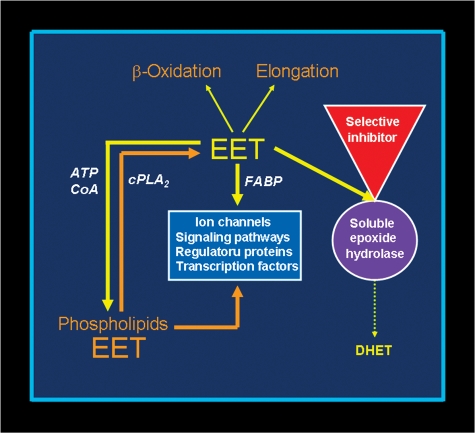Fig. 2.
sEH inhibition enhances EET function. Conversion of EET to DHET by sEH is the main pathway of EET metabolism. This attenuates most functional effects of EETs, making sEH a logical target for increasing and prolonging the actions of EETs. sEH inhibition decreases DHET formation and leads to intracellular EET accumulation. This results in more EET incorporation into phospholipids and utilization by other metabolic pathways, including β-oxidation and chain-elongation. Functional responses are increased because of the larger amounts of intracellular unesterified EET and EET-containing phospholipids. Furthermore, more EET is released when intracellular phospholipids are hydrolyzed, maintaining the increased intracellular concentration of unesterified EET.

